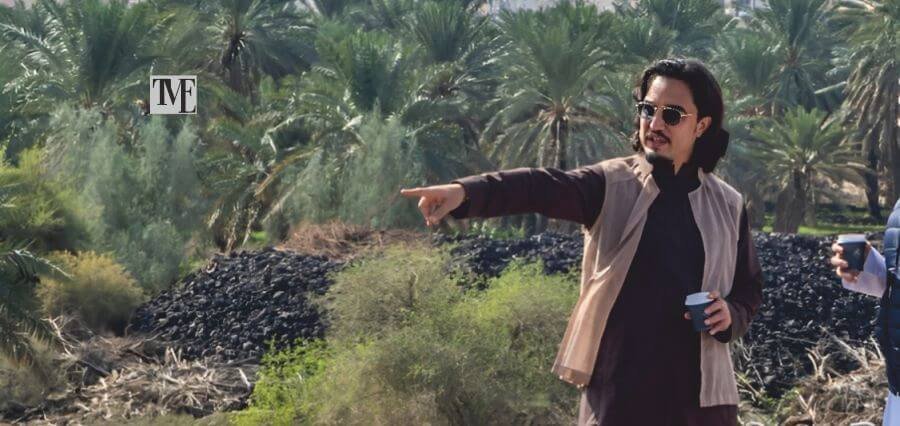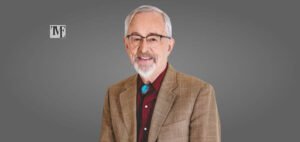Where heritage and a visionary touch go hand in hand within the kingdom’s dynamic cityscape—a world where one would rarely look beyond—a few names emerge as powerfully as that of Arch. Taha Abdulaziz Alandejani. His own architectural path is more than a chronicle of buildings or urban plans; it is one of cultural preservation, visionary stewardship, and thoughtful design that embodies the Kingdom’s vision for rebirth. Rooted in heritage, yet fueled by imagination, Arch. Taha Alandejani is redefining Saudi Arabia’s architectural identity in ways that speak locally as well as globally.
A Steward of Cultural Revival
As Senior Director of the King Salman project for Quba’a mosque, Arch. Taha Alandejani holds a role of great importance. The project under his stewardship is revolutionary in the extreme: the restoration of the historic Quba’a Mosque quarter, one of Medina’s most sacred religious and historical enclaves. This role makes him not just a guardian of Saudi cultural heritage but an architect of its urban destiny.
Apart from spearheading this mega project, Arch. Taha Alandejani is the finest representation of the King Salman Charter for Architecture and Urbanism—a powerful paradigm that was created by the Ministry of Culture in coordination with the Architecture and Design Commission. Not a policy document, the Charter is a manifesto announcing the principles of human-focused design, sustainability, and heritage in the Kingdom’s architectural identity.
His engagement includes prime-time platforms like King Salman Charter for Architecture and Urbanism Awards (KSCAU), the Saudi Building and Infrastructure Awards (SBIA) 2025 judging panel, and other local and international design competitions as technical evaluator and jury advisor. Such assignments attest to his credibility as an opinion leader influencing practice and policy. His tone echoes in the living rooms of design practices and in national discourse determining the trajectory of Saudi Arabia’s architectural and urban future.
The Vision Behind the King Salman Project
The King Salman Project is a challenging and ambitious development occupying more than 12 million square meters of the historic Quba’a area. At its core lies a fine balancing act: expanding the holy Quba’a Mosque, master planning the broader urban environment, and retaining historic structures while being sensitive to the site’s spiritual sanctity and cultural cohesion.
This project is a massive collaborative effort of Saudi government institutions under the guidance of the Madinah Region Development Authority, the team consists of top international design practices and technical experts who join to incorporate global best practices with authentic local traditions in perfect balance.
The technical sophistication of the project goes beyond technical complexity to encompass the width of end-user requirements and a wide stakeholder base.
Technically, the project employs best-of-class local and foreign experts and consultants, competitively selected through an intensive combination of traditional bidding and design competitions to provide the best.
For end consumers, the design should incorporate a very diverse range of demographic profiles from throughout the Islamic world — from lower-income to super-rich, from average guests to royalty, and also incorporate changing temporal and seasonal requirements.
In the language of stakeholders, the project entails an all-encompassing network of operators, maintenance teams, service providers, regulatory and legal entities, Vision 2030 initiatives, Public Investment Fund projects, private investors, heritage, cultural, social, and environmental entities and institutions.
Such a multi-faced alliance guarantees that the project not just achieves the highest technical standards but also respects the rich cultural heritage and vibrant societal fabric that it represents. It is structured in three pillars:
Architectural Enlargement: Expanding the mosque capacity and upgrading facilities without disturbing its religious atmosphere.
Master Planning: Developing a sustainable, accessible, and livable city environment around the mosque to meet the needs of the residents and visitors.
Heritage Revival: Restoration of historic buildings in a respectful manner by adaptive reuse programs preserving the Islamic architectural heritage of the site.
Designing for the Human Spirit
What makes Arch. Alandejani stand out is his philosophy of management—something specific to recognizing talent and embracing excellence. “I believe in hiring the right talent and empowering them with process-based training and care,” he feels. His approach is way above run-of-the-mill management; it’s just about positioning professionals to strengths, investing in them, and facilitating open communication through all project phases.
His style is an uncompromising focus on human experience. In line with principles of the King Salman Charter, authenticity, human centricity, innovation, cultural continuity, and sustainability inform all the decisions. He empowers his teams with the autonomy to adopt integrated design practices and vigilant monitoring systems that ensure timely delivery, on-budget completion, and culturally responsive results.
To Arch. Taha Alandejani, architecture is a service of people, not merely an art. His structures are meant to elevate human life higher—where every room invites interaction, comfort, and respect.
Sustainability as an Inner Frame
With the world today quickly sensing the environmental crisis, Arch. Alandejani is firm in his stance that sustainability cannot possibly be an afterthought fad—it must be an inner framework by which all projects are conceived.
Sustainability, in his understanding, is the intersection of environmental responsibility, economic sustainability, and social welfare. Sustainability is realized in his work through considered means such as judicious building orientation to minimizing energy use, employment of indigenous vegetation to maintain the local microclimate, and the incorporation of renewable technology such as solar photovoltaics. Off-site construction as modulars is also employed as a means of maximizing efficiency and eliminating waste.
He articulates this philosophy succinctly: “True sustainability is not just about carbon footprints; it’s about enriching human life while preserving the natural and cultural environment.” Arch. Alandejani’s work dovetails closely with Saudi Arabia’s Vision 2030 initiatives—especially the Quality of Life Program and the Guests of the Holy Mosques Initiative (DARP)—which aim to uplift communities and enhance the urban experience for millions of residents and pilgrims.
The Power of Integrated Thinking
Alandejani advocates an interdisciplinary approach, combining architecture, interior design, urban design, and landscape architecture from the outset of each project. “It’s not just a matter of designing a building that is lovely. It must also perform well, be culturally sensitive, and be functional to the users,” he insists.
His firms employ sophisticated tools like Building Information Modeling (BIM) and electronic project tracking software to provide fastidious coordination, cost control, and quality assurance. Such integration guarantees that visual beauty never compromises practicality or economic sense.
Such holistic and cohesive thinking is evidence of mature appreciation that architecture is within complex social, cultural, and technical systems.
Leadership Based on Listening and Wisdom
Among Arch. Taha Alandejani’s most distinctive traits is a leadership style defined by listening, empathy, and analytical precision. He perceives architecture as a dialogue between people’s behaviors, cultural values, and environmental context.
Whether for high-profile officials or ordinary people, his responses are expansive and realistic, founded on deep user understanding and stakeholder input. Navigating through complex webs of ministries, developers, investors, and public perception, he creates concensus-oriented projects which balance innovative vision with practical pragmatism.
His stamp is creating timelessness and constructing contextual designs which honor cultural continuity and grapple with contemporary relevance.
From Humble Beginnings to National Influence
Arch. Taha Alandejani started with small residential and hospitality projects—a blue-collar lifestyle that refined his understanding of design, development, and operations. From villas to hotels, each project expanded his knowledge base and increased his sensitivity to what he refers to as “architectural ecosystems”: the fine ballet between design, technology, business, and human use.
His ascension is not overnight but rooted in years of vision, performance, and sincerity in projects. He is no longer just the top project director but the most powerful urban development vision idea leaders in Saudi Arabia.
As far as innovation is concerned, it has nothing to do with aesthetics. For Arch. Taha Alandejani, innovation is not necessarily about trendy materials or technological assistance. It requires courage—the courage to turn back to tradition and interpret it for the modern world.
His work is generally a kind that would marry Islamic forms of traditional architecture with contemporary structural systems, in one harmonious conversation between the past and the future. Strategic innovation also involves bringing in cost-saving technologies and techniques that enhance livability and conserve resources. “Every design decision must be justifiable not only aesthetically, but economically and functionally as well,” he adds.
Educating, Enriching, Empowering
Aside from his own practice, Arch. Taha Alandejani is also heavily committed to the Saudi talent development. He is close to universities, academies, and young professionals in a bid to bridge the gap between school and practice.
His initiatives create a pipeline in which upcoming architects acquire not only technical skills, but also a deep sense of national priorities and cultural heritage.
His organizations combine veteran professionals with the next generation of leaders, united by common values of innovation, sustainability, and excellence. “It’s not about hiring local—it’s about creating a richer local ecosystem,” he insists.
A Legacy of Human-Centric Excellence
Asked to identify his legacy, Arch. Alandejani does not hesitate: “Innovative designs with quality and a human approach.”
These words best describe a lifetime of work driven by mission more than glory. In the midst of an era of computer technology and artificial intelligence, he is a steadfast believer in the human touch. Each building, each space, each city plan that he has overseen has a story to tell—it speaks, it guides, and it inspires.
He is not a creator of silent architecture; he is a creator of spoken architecture.
Preparing for the Future
Saudi Arabia’s swift shift under Vision 2030 puts architecture at the forefront of national identity and economic diversification. In the view of Arch. Taha Alandejani, the future requires architects to be multi-disciplinary, business savvy, and extremely collaborative. “Architects need to design, but also know finance, operations, and stakeholder values,” he asserts.
He urges young architects to be masters of both design and management ability, demonstrating that functionality, beauty, and strategy are not opposing but additive principles.
Crafting a Rich Legacy
In an era when architecture may be all style or all technology, Arch. Taha Alandejani is a refreshing exception. His work is informed by enduring principles, inspired by teamwork, and judged by its effect on human lives.
Through mosque expansions, heritage restorations, and city masterplans, he is shaping a future in which culture, sustainability, and innovation exist together in balance.
His legacy already exists—not just of stone and concrete, but of minds, hearts, and labor of the next generation of Saudi architects rising up beside him.





